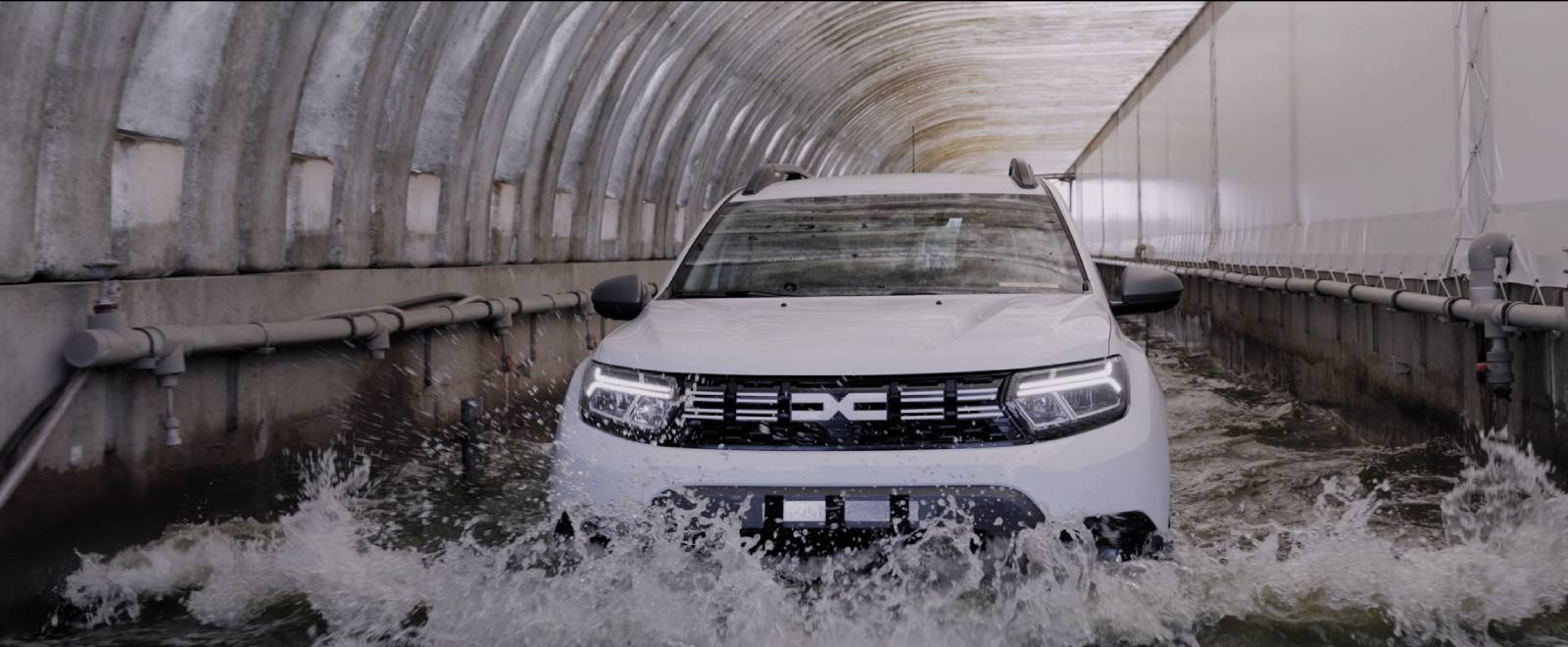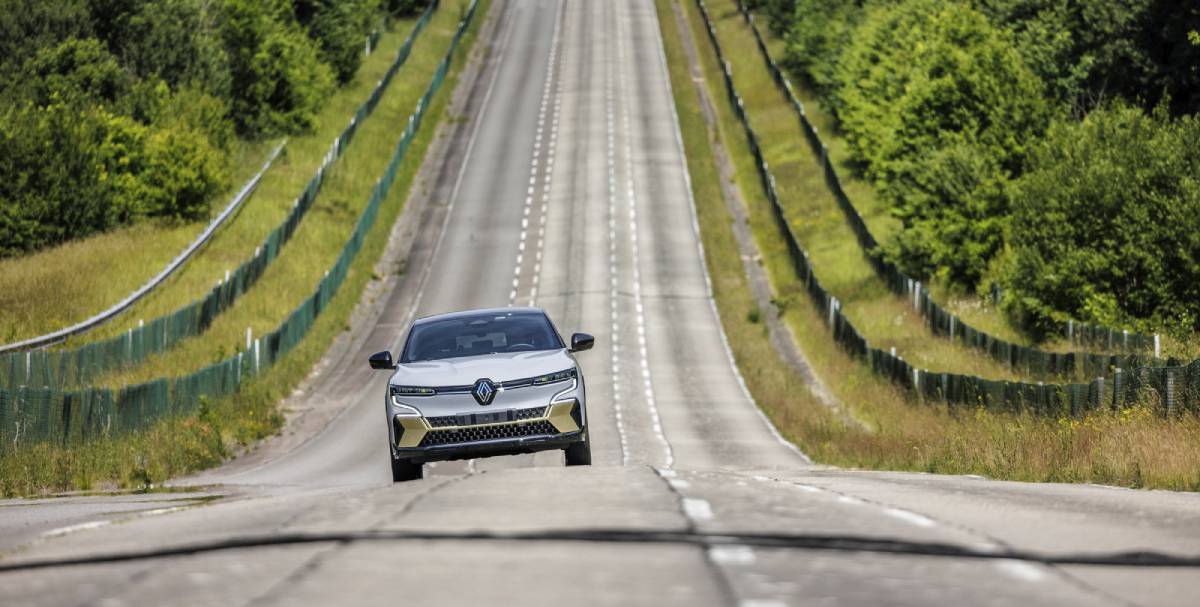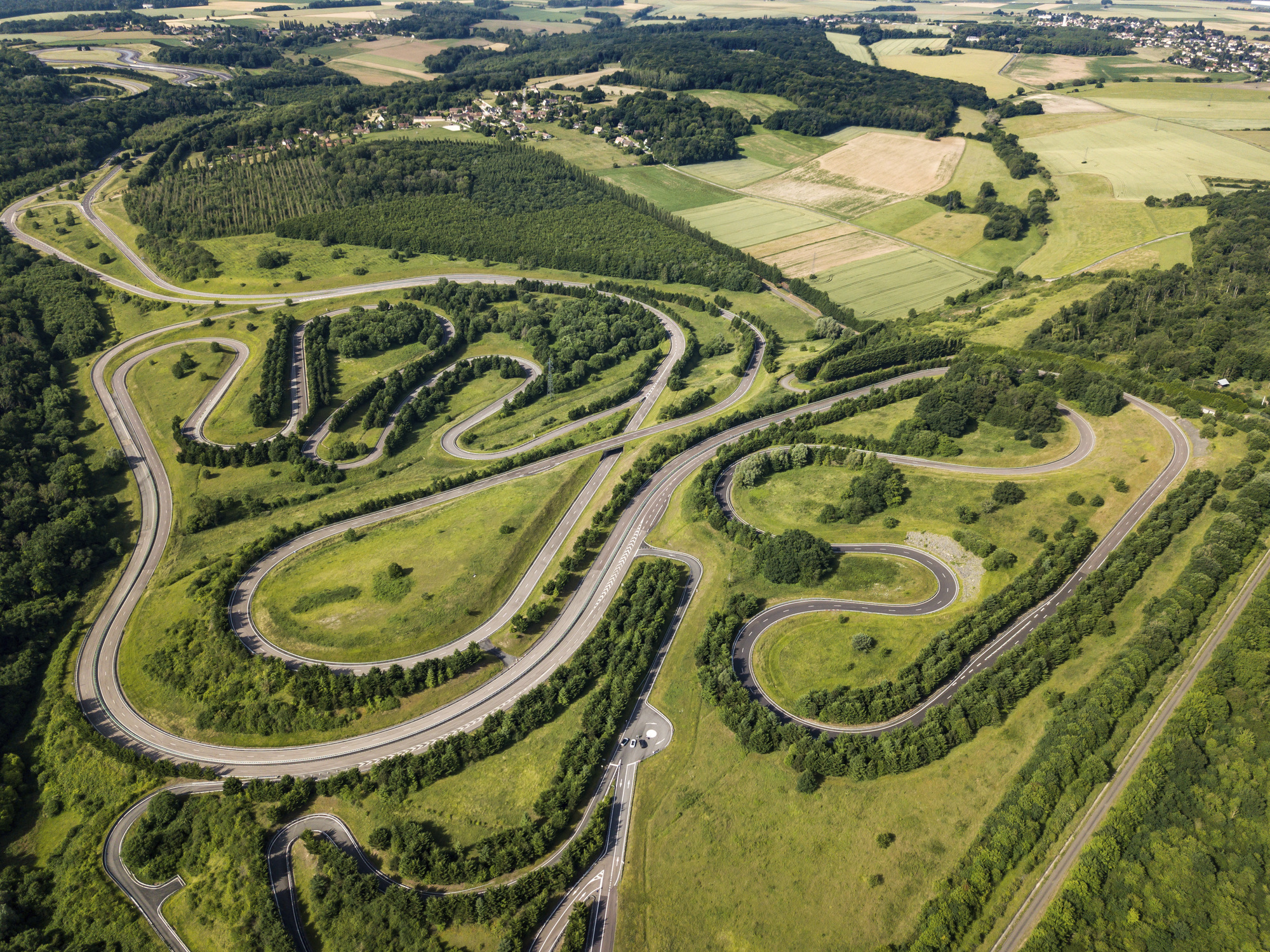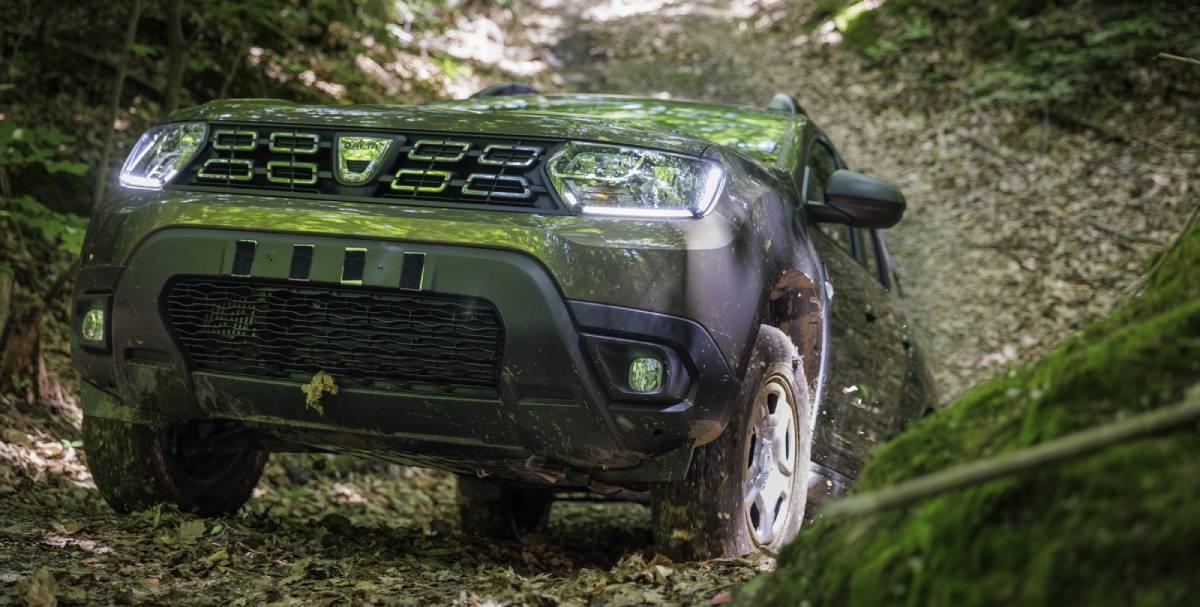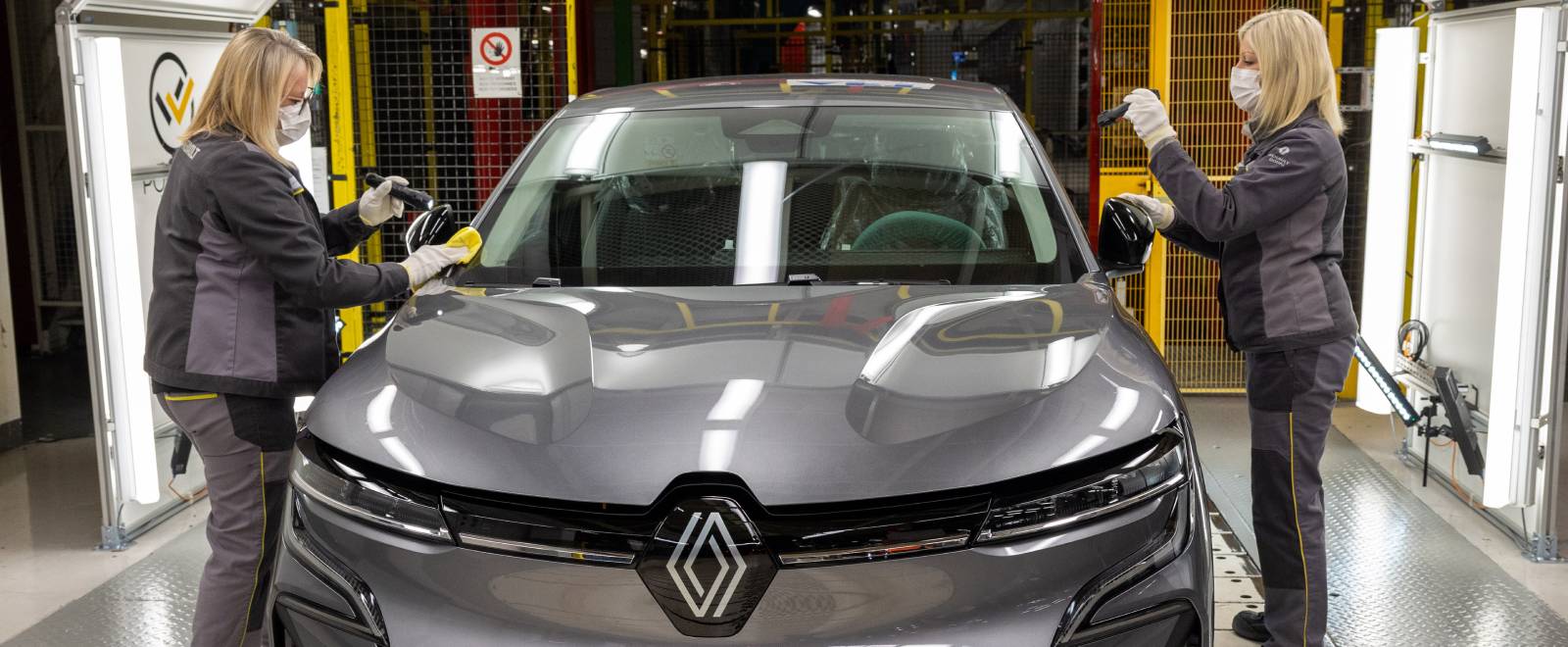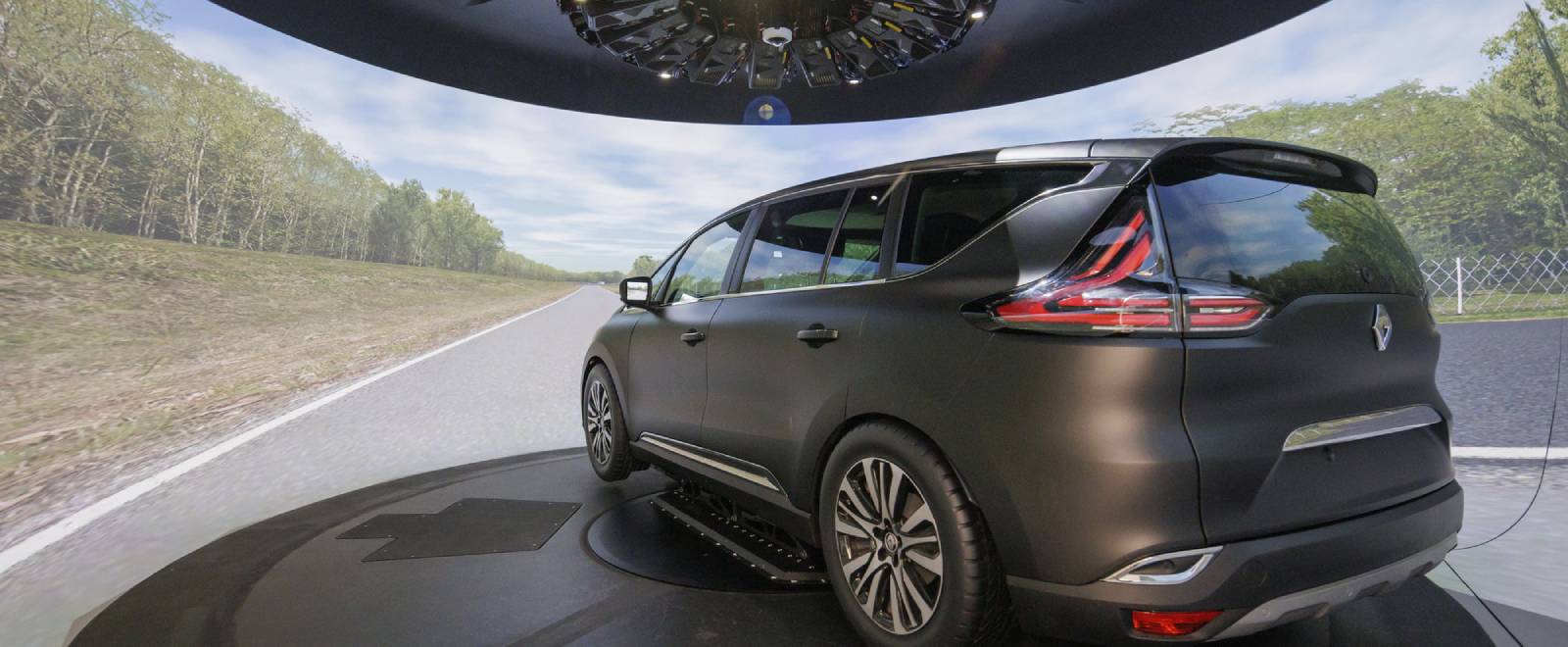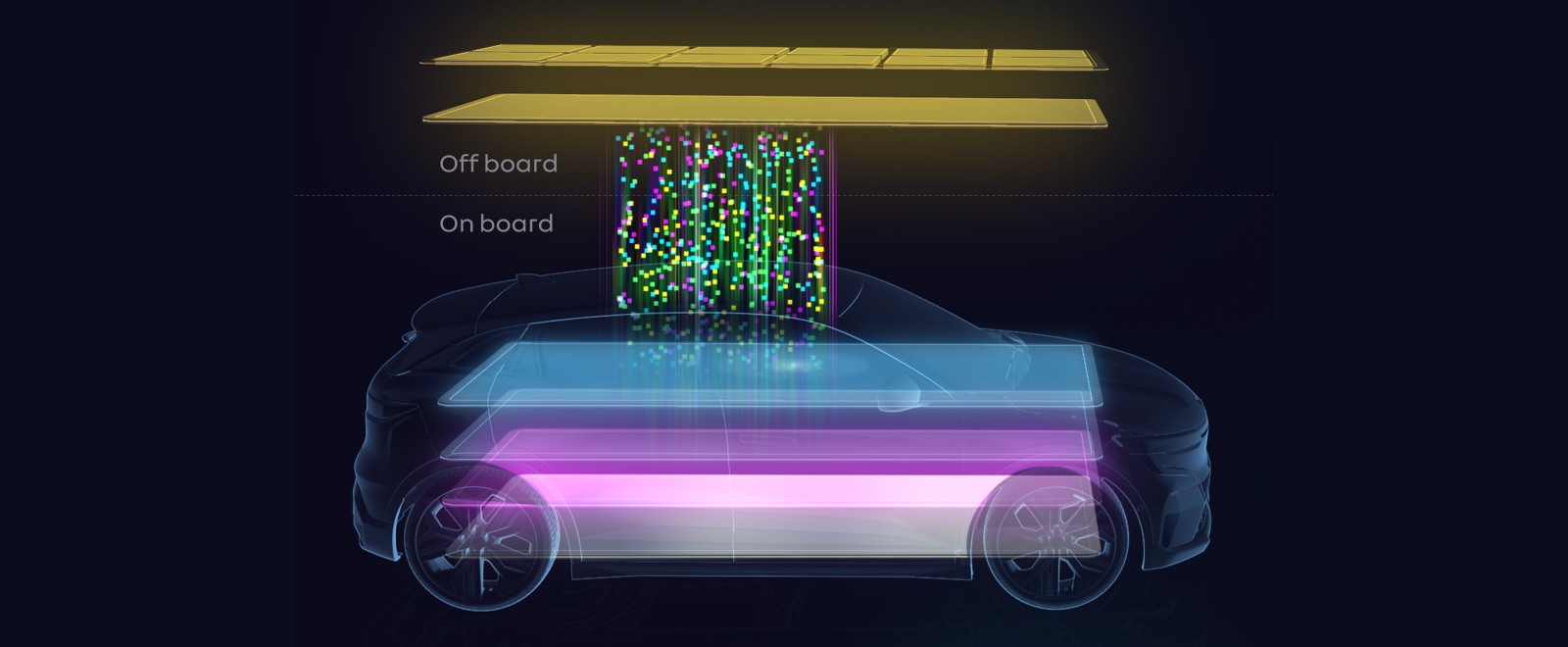

Putting cars to severe tests for greater durability
A future electric Renault 5 in camouflage is driving along a bumpy road, sending up clouds of dust. After a few minutes, it comes to a ford, where it is immersed in 24 cm of water, through 6 cm holes. Next, it takes on a stretch of cobbles with a range of obstacles, including potholes and manhole covers that are not quite flush with the road. Over the next hour, the route followed by the future Renault 5 takes it up a small, winding mountain road and along a rough track in the middle of a forest. With such dynamic tests, Renault Group is able to simulate the ageing of its cars in accelerated mode. But where are we? Argentina? Andalusia? South-East Asia? The Alps? No, we're actually in Aubevoye, Normandy, at the top-secret technical centre where Renault Group develops its future models. The Aubevoye technical centre (CTA) has 35 tracks covering a distance of over 60 km and more than 600 hectares of woodland on a site that is closed to the public and well protected from prying eyes.

Alongside the dynamic test environment described above, Renault Group also relies on state-of-the-art equipment, including test benches, wind tunnels, corrosion chambers and anechoic chambers[1]. Test engineers also have access to a host of other facilities for misusing vehicles under development, at the technical centre in Lardy. In this way, the Group can test its future cars and compare them with those of its competitors, both in normal conditions of use and in extreme accelerated conditions. By conducting five months of static and dynamic tests, Renault Group is able to simulate five years of ageing on a given vehicle.

Our challenge: to solve 80% of our customers' durability problems
Durability is the combination of two independent variables: reliability (a car that does not break down) and ageing (it still looks the same). To objectively assess the reliability of its vehicles, Renault Group relies on data collected from vehicles through its network: “Our target for the end of 2024 is to find a solution for 80% of the durability problems encountered by customers, and more specifically, for the 200 parts that tend to cause the most problems on vehicles,” explains Dominique Berthier, durability expert leader with the Industry and Quality division of Renault Group.
According to Renault Group, the sustainability project has already addressed two-thirds of the difficulties encountered on the launch of Megane E-Tech electric and Austral. Ahead of the launch of the future Duster and Master, the brand is seeking to address 75% of the problems... and 85% for the future Renault 5 Electric, seen earlier on the tracks at Aubevoye.
Durability in the DNA of our cars
Implementing a clearly structured method, the Group’s quality and engineering experts will use the incident data collected by the network to prevent any recurrence of the problems encountered. The solutions found will be made permanent and incorporated into the standards applied to the design of the Group's future vehicles, injecting sustainability into the genes of its models. These advances will clearly improve the residual value of the brand’s future vehicles.
“This joint Engineering/Quality project is a long-term undertaking. It was launched three years ago as part of a holistic approach that is intended to be comprehensive and far-reaching. We are now seeing the results of our efforts, with the detailed analyses of quality issues and the corresponding solutions. But it is absolutely essential that we stay focused and keep our eyes on the ball. This is why every solution we find and every improvement that we make becomes a permanent part of our development processes,” explains Gilles Le Borgne, Renault Group Chief Technical Officer.

Secrets revealed for a greater customer satisfaction
Problems can be solved in many different ways: by improving processes, changing suppliers, using new materials, and so on.
Let’s take a few examples! On Clio 4, customers were unhappy about the vehicle’s resistance to ageing, and the relatively early appearance of scratches on the door panel, dashboard and central console. To address the problem, Renault used different materials for the door, rethinking the positioning in order to put “the right materials in the right place”. The brand adopted polypropylene with better scratch resistance, plastic with different graining, painted plastics (more robust) and elastomer mats in storage areas, while also using less black gloss trim. By applying these solutions and others to new cars, the Group has significantly improved customer satisfaction.
Another example is the multimedia display. Renault Group has replaced the plastic film on the screen with specially coated glass, designed to resist finger marks and scratches... Austral was the first vehicle to feature this upgrade, which has since been extended to all new models. To finish, we’ll look at one last point that has been the subject of many complaints in the past: air conditioning. The project identified no fewer than four types of malfunctions, causing fluid to leak into the high-pressure hoses of the air conditioning system. All these issues have now been addressed as part of a sustainable approach. We could give many more examples in this article but, for reasons of confidentiality, we’ll stop here!
“Based on these in-depth analyses and the corrective action taken, we have already been able to develop new standards in sustainability, in collaboration with the engineering department. These standards place us well above the market average, and they will be applied to all new projects for all our brands, without distinction,” explains Thierry Charvet, EVP, Industry and Quality with Renault Group.
On the road to excellence with the Software-Defined Vehicle
We’ll leave the last word on the sustainability project to Dominique Berthier: “This approach fosters a culture of excellence. By building sustainability into the genes of its vehicles, the Group has placed itself on a par with the best and is still making continuous progress”.
And that's without taking account of the revolution that is just around the corner, with the Software-Defined Vehicle (SDV). By continuously upgrading vehicles throughout their service lives and installing new applications to enhance their functionalities, Renault Group will soon be able to provide preventive maintenance services, for example, with durability guaranteed for even longer. Another step towards the car that remains forever young, like the portrait of Dorian Gray!
[1] An anechoic chamber is an experimental room whose walls absorb sound or electromagnetic waves, thus preventing echoes from interfering with measurements.
